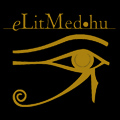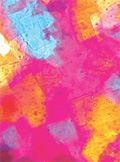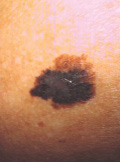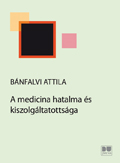The eLitMed.hu medical portal uses computer cookies for convenient operation. Detailed information can be found in the Cookie-policy.
Lege Artis Medicinae - 2013;23(12)
Content
[Christmas inventory]
[Overall, it is clear that humanity is facing perhaps its greatest challenge ever; humanity needs a consciously done reform, in its established economic and social mechanisms. A kind of passionate self-reflection, a dedogmatisation. This requires a deeper and more comprehensive understanding of its history and of itself. The way to a peaceful Christmas 2073, I suggest...]
[Vitamin D treatment: hormone therapy for patients who need it or simply a supplementation for everyone?]
[Various medical associations issue different recommendations for the prevention and treatment of vitamin D deficiency. These significant differences are partly explained by the different definition of normal vitamin D level and the use of completely different mathematical models to predict the increase in vitamin D level as a response to therapy. According to the Institute of Medicine (IOM), the target vitamin D level is 20 ng/ml, whereas the Endocrine Society (ES) recommends 30 ng/m as the miminum target value. According to the ES, a 1 ng/ml increase of vitamin D level can be reached by a daily intake of 100 NE, while the IOM recommends 3.6 ng/ml. Moreover, the IOM states that the effect of therapy on serum level is nonlinear. These differences show that the ES and IOM have different views on the risk of adverse effects. The IOM recommends 400 IU vitamin D daily for children younger than 1 year, 800 IU for those above 70 years and 600 IU/per day for everyone else. The ES recommend 400-1000 IU daily for all infants and 1500- 2000 IU for adults. Screening, however, is not recommended by either society. To decrease uncertainty concerning the side effects of higher-dose vitamin D treatment, it is important to understand, use and support the function of the pharmacovigilance system of the pharmaceutical industry that manufactures and markets various (prescription, over-the-counter) preparations. This is what the author aims to highlight in the second part of this article. Using this system, both the doctor and the patient can help support and accept the justification of higher-dose vitamin D therapy.]
[Contact lens wear]
[The improvement of contact lens materials and types have made it possible to use contact lenses for visual rehabilitation besides optical and cosmetic use, The high oxygen permeability of contact lenses have extended the age limits for contact lens wear and encouraged clinicians to use them for therapeutic purposes, especially for pain relief and aiding cornea epithelialisation. Contact lenses can be worn safely for years if rules of hygiene are followed. Their use is most frequently abandoned because of contact lens related dry eye. Despite the high oxigen permeability, their prolonged wear increases the risk of inflammation.]
[New potential perspectives of statin therapy]
[Statins have become crucial components of the therapy of cardiovascular diseases. Beyond their cholesterol-lowering effect, statins turned out to have further beneficial effects on various vascular mechanisms. One of the best known effects is antithrombotic capacity, which is related partly to platelet function and partly to the coagulation cascade. Besides experimental observations, interventional clinical trials have also demonstrated that statins have an antithrombotic effect both in arterial and venous thrombosis. Regarding the effects of statins on dementia, previous studies with relatively small sample sizes had controversial results. Recently, two observational studies of tens of thousands of elderly patients reported that statins reduce the incidence of nonvascular dementia. Evaluation of the data revealed that statins have pleiotropic effects in this case, too. The results discussed here shed light on new benefits of statin therapy used for reducing cardiovascular mortality, namely the prevention of thrombotic events and dementia. These benefits are related to the antithrombotic and anti-inflammatoric capacity of statins.]
[The possibilities of pharmacological treatment of obesity]
[There have been attempts to treat obesity with medicines for nearly 100 years, since the discovery of ephedrine. For decades amphetamine derivates and agents stimulating or inhibiting the release of noradrenaline and dopamine have been applied. However, most of theses drugs had to be gradually withdrawn, due to their adverse effects on the cardiovascular and central nervous system or their sympaticotonic effect. Dexfenfluramine (Isolipan), which was introduced in the 90s, did not have such side effects, but it turned out to potentially cause valvular heart disease. Finally, sibutramin (Reductil) was introduced, which again had to be withdrawn in 2010 due to its hypertensive and cardiovascular side effects. After all, we were left without any appetite-suppressant drugs. Orlistat therapy, (Xenical 120 mg, alli 60 mg - OTC), which inhibits the absorption of fat, can eliminate only 30% of the consumed food’s fat content, at the price of gastrointestinal side effects. The latest result of research carried out wordwide is that in 2012 the FDA approved commercial distribution of the selective 5HT2/c serotonin agonist lorcaserin (Belviq), which enhances satiety, in the USA. Unfortunately, in 2013 the EMEA temporarily postponed the lauch of this drug, until certain adverse effects are excluded. For diabetic patients, the GLP-1 agonist exenatid and the GLP-analog liraglutid, which can also reduce body weight, are available in the form of injections.]
[The effects of angiotensin receptor blockers on the nervous system in hypertension and dementia]
[The renin-angiotensin system (RAS) is one of the most important mechanisms regarding the pathomechanism and treatment of hyprtension. The most of the elements of the RAS are found in the nervous system too. The effect of angiotensin converting enzyme inhibitors and angiotensin receptor blockers (ARBs) is based on the inhibition of the RAS. ARBs might have a special role in the central nervous system because they do not decrease the production of angiotensin but inhibit its harmful effects mediated through the AT1 receptor while allowing the stimulation of AT2 receptors with resulting pleiotrophic actions. Hypertension is the most important risk factor for stroke and has a negative effect on cognitive functions. Antihypertensive treatment has an effect on the nervous system; in addition to the consequences of the reduced blood pressure, ARBs might provide additional advantages in stroke and dementia prevention.]
[Mirror neurons and interpersonality in the paradigm of embodied mind]
[In this paper, our aim is to scrutinise the psychology and phenomenology of interpersonal relationships from an interdisciplinary viewpoint. This multi-perspectival examination has a key concept: we critically discuss the interdisciplinary dialogues and philosophical appraisals regarding the issue of mirror neurons. Empathy and resonance phenomena have philosophical, psychological, and biomedical importance. Our paper, by applying certain philosophical and empirical results of the overarching paradigm of embodiment, attempts to shed light on several semantic problems, which could come up with respect to the function of mirror-neurons. In conclusion, we would like to attempt to utilise the results of contemporary phenomenology in order to clear some semantic problems, considering the features of mirroring and resonant behaviour.]
1.
Clinical Neuroscience
Is there any difference in mortality rates of atrial fibrillation detected before or after ischemic stroke?2.
Clinical Neuroscience
Factors influencing the level of stigma in Parkinson’s disease in western Turkey3.
Clinical Neuroscience
Neuropathic pain and mood disorders in earthquake survivors with peripheral nerve injuries4.
Journal of Nursing Theory and Practice
[Correlations of Sarcopenia, Frailty, Falls and Social Isolation – A Literature Review in the Light of Swedish Statistics]5.
Clinical Neuroscience
[Comparison of pain intensity measurements among patients with low-back pain]1.
Clinical Neuroscience Proceedings
[A Magyar Stroke Társaság XVIII. Kongresszusa és a Magyar Neuroszonológiai Társaság XV. Konferenciája. Absztraktfüzet]2.
3.
Journal of Nursing Theory and Practice
[A selection of the entries submitted to the literary contest "Honorable mission: the joys and challenges of our profession" ]4.
Journal of Nursing Theory and Practice
[End of Life and Palliative Care of Newborns in the Nursing Context]5.
Journal of Nursing Theory and Practice
[Aspects of Occupational Health Nursing for Incurable Patients ]


















